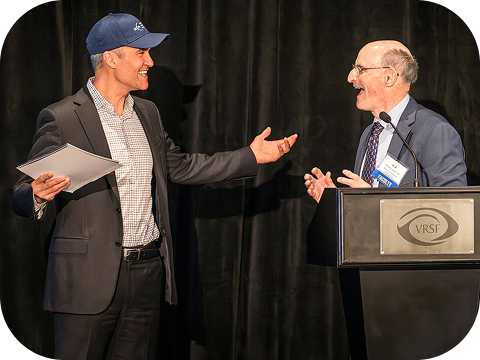What is Posterior Vitreous Detachment and is it Serious?

Any term that refers to the body and includes the word “detachment” can sound frightening. Posterior vitreous detachment (PVD) is an eye condition that sounds far worse than it usually is. In some cases, treatment never becomes necessary.
In other cases, because there is a slight chance that symptoms of posterior vitreous detachment could indicate a serious eye problem, it’s critical that an ophthalmic exam takes place right away.
How to Spot Vitreous Detachment
The number one indicator of a potential threat to your eyesight is the sudden onset or increase in floaters. This visual phenomenon looks like tiny shapes or spots of light that drift across your visual field when you move your eyes from one object to another.
The reason that floaters occur is that the vitreous, or gel-like substance that fills the space between the front and the back of the eye, degrades. The vitreous is tethered to a base near the front of the eye by small collagen fibers. These fibers are also present at the back of the eye to secure the vitreous to the retina and the optic nerve.
Over time, collagen fibers throughout the whole body begin to break down, including in the eye. This deterioration of collagen leads to the liquefication of the vitreous. The gelatinous matter becomes somewhat unstable and fluid, causing contraction that may separate the vitreous from the back of the eye. Floaters signify the stringy strands of the degrading vitreous casting shadows on the retina.
Usually, floaters decrease spontaneously over a few months’ time and no further symptoms occur. The collagen fibers that once connected the vitreous to one of its bases break away and no permanent damage is done. Sometimes, though, the fibers do not break easily. Instead, they pull on the retina and pose a risk of tear or retinal detachment.
Very few people who experience posterior vitreous detachment also develop retinal problems. If the retina were to tear or detach, treatment would need to be administered right away to seal this part of the eye. This is often done with cryotherapy or laser therapy or, in some cases, surgery to reattach the retina. When conducted early, treatment for retinal tears and detachment is over 90 percent successful.
Retina Consultants of Minnesota is proud to serve patients in St. Paul, Blaine, Minneapolis, and other MN cities. For more information on our services, call (855) 515-2020.


